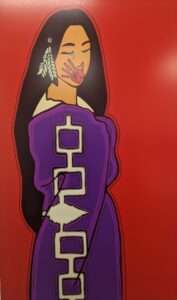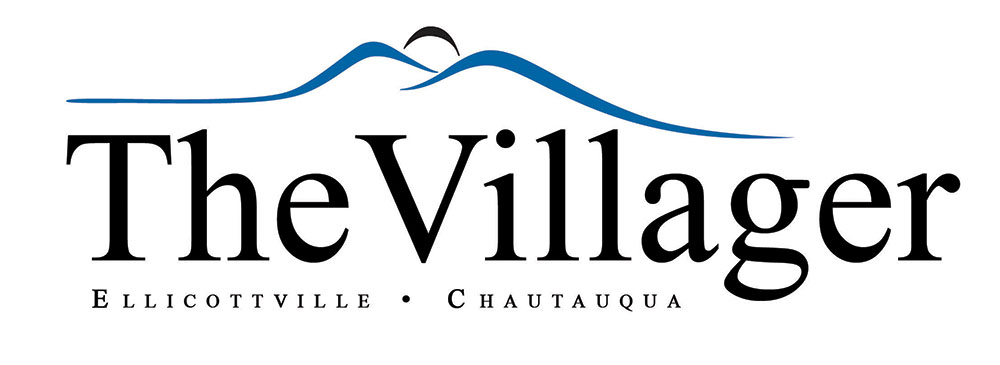By Miles Hilton
Kaylee Colburn and I sit down in the classroom of her new gallery and education space, and she starts telling me about showing a piece of hers “Grains of Time”, to an Indigenous woman. “In that is Sweetgrass, and she got really excited about it. She used to make baskets with it” Colburn begins, “it’s sacred to us, but ultimately, it’s a very simple thing. I handed her a braid of it, and she cried. And that kind of broke me a little bit.” As we speak, it’s clear that Colburn has alchemized that heartbreak into determination. Her voice is matter-of-fact as she continues, “because she doesn’t have access to her culture, and hasn’t had that feel and the smell of it for such a long time, it broke her heart. But in a good way.”
It’s a little hard to find KayCo gallery, tucked in the back of the second floor of the Jamestown office and retail complex at 20 W. 3rd Street, but once you find the right old-fashioned door, a fresh and vital world reveals itself.

At the gallery’s opening last Friday, dozens of people moved through the space appreciating the diverse exhibits. Most feature the art of the gallery’s founder and owner, Kaycee Colburn, a Seneca Jamestown resident who currently works as Artist in Residence at JCC. Tucked in a somber hallway, four of her charcoal paintings form the ‘Haunted Spaces’ collection, an eerie tribute to the artist’s background as a paranormal investigator. In an adjacent, brightly-lit space, reproductions of her digital works fill the walls with bright colors. A collage of images of native plants and allegorical interpretations of the four seasons recall pop art, while a dozen full-size posters, each based on a hashtag relevant to the Indigenous community, bring together art and advocacy.
At a climactic moment during the opening, Colburn and her partner remove a screen imprinted with red handprints, revealing a 4 foot by 3 foot digital painting called “The Crying Woman.” The ¾ profile, nearly life-sized figure is Colburn’s protest of the kidnapping of Indigenous women and girls, often known by the tag-line of ‘Missing and Murdered Indigenous Women’. See https://www.nativehope.org/missing-and-murdered-indigenous-women-mmiw for more information.
This piece and the series of hashtag works speaks to one of Colburn’s main objectives in opening the gallery and education space: bridging a cultural gap in Jamestown and the surrounding areas. Colburn describes her role at JCC as “culture-bearer”, and created KayCo Gallery to continue the “community building and community outreach” begun at JCC. Speaking of Indigenous people and art, she affirms “we are from here, it belongs here”, underscoring the importance of a dedicated Indigenous space in downtown Jamestown.
Here, Colburn is filling a need she herself has felt. Raised in Jamestown, she has experienced both racism from white residents who don’t recognize the continuity of Indigenous life to this day, or it’s existence outside of the Seneca Nation’s territories, and “lateral racism”, defined as racism from within a marginalized group, from Indigenous people who don’t consider others ‘Indigenous enough’. “You’re native because you’re native”, Colburn affirms, going on to dismiss the practice of Blood Quantum, “a system that the federal government placed onto tribes in an effort to limit their citizenship” according to NPR’s Code Switch podcast. “It’s like walking in two worlds, really, and working in them,” says Colburn.
Colburn credits her mother, present and beaming at the opening, with her strong connection to her culture. “She lived through the removal” of residents, many of them Indigenous, from their homes to make way for the Kinzua Dam in the 1960’s, “she grew up in a longhouse, she lived the indigenous lifeway […] she’s the reason I am able to do any of this. She passed it down to me”, says Colburn. Several of the items on display are beadwork and corn-husk dolls, ancient art-forms that Colburn learned from her mother, and now teaches to students across the county.
KayCo gallery currently occupies two suites in the 3rd street building, but Colburn has big dreams for its future. “My dream for KayCo is that it will develop its own legs,” becoming an organization with its own building where other underrepresented cultures have space to practice and teach their stories and practices. Colburn hopes that a more independent KayCo will leave her “free to be an artist”, with “KayCo still filling that gap” of cultural continuity and education in the county.
“Having to constantly educate people on my identity can be a little bit draining” she acknowledges, juxtaposing the delight of a child learning an Indigenous tradition with the subtle racism she encounters from adult classrooms. “This is part of my heritage,” she says firmly, “and I’m proud of it and we’re going to continue on.”
